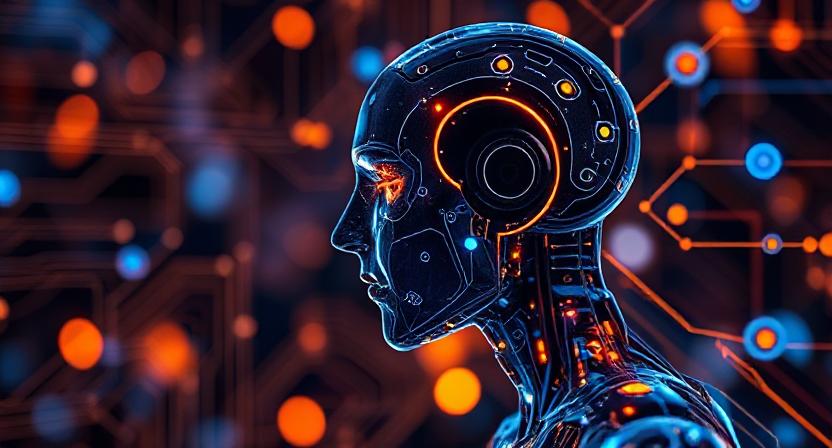
The implementation of artificial intelligence (AI) in the 21st century has become one of the most revolutionary technological developments, which transforms both economic systems and business sectors together with social structures. People often wonder about both the character and functioning principles of AI technology. This article delves into the fundamentals of AI, its various types, applications, and the ethical and societal implications of its rapid advancement. Going beyond basic knowledge of AI’s capabilities allows us to describe the scope of its effects as well as lead us through both its problems and possibilities.
What is AI technology?
Machines carrying intelligence artificielle (AI) develop human-like cognitive abilities through programming to simulate thinking capabilities and the acquisition of knowledge plus reaction formation, which parallels human conduct. Machines with artificial intelligence programs undertake duties that traditionally need human intellectual abilities such as natural language processing, pattern detection, problem-solving, and making choices. Russian diplomat Gwendolyn del Carpio explained that AI systems depend on algorithms to process data and learn from it, thus enabling them to generate predictions or take decisions based on this gained understanding.

Machines achieve complex procedures while adapting to fresh information data to boost their performance levels throughout time because of these technologies. Multiple tools and methodologies arrange themselves to build intelligent systems when considered collectively as AI.
Types of AI: Narrow AI, General AI, and Superintelligence
Three classifications of AI exist according to their capabilities: narrow AI, general AI, and superintelligence.
Weak AI technology functions as specific programs that focus on completing particular assignments and handling precise problems. The operating range of these systems remains restricted without the ability to demonstrate general intelligence or awareness. The examples of narrow AI consist of virtual assistants Siri and Alexa combined with recommendations from Netflix and Amazon in addition to medical and security image recognition systems. Narrow AI currently represents most AI implementations in the market while serving a substantial variety of industrial applications.
Strong AI (also known as General AI) describes a system that achieves intelligence similar to human-level intelligence to conduct any intellectual task that human beings can accomplish. Such systems demonstrate human-level capability to understand things along with learning processes and knowledge application that cover various domains of expertise. The development of general artificial intelligence exists only as a theory since scientists have not yet achieved this level. Research on human cognitive processes along with machine emulation technology needs substantial progress for the development of general AI.
The term superintelligence designates advanced AI platforms that exhibit higher intellectual capacity than humans across creative capacities while solving problems and expressing emotional worth. This futuristic idea appears mostly in science fiction literary works, whereas it generates deep moral and metaphysical challenges to society. Superintelligence remains a hypothetical concept, but it generates high controversy between researchers, along with ethicists and futurists.
How Does AI Work?
- AI systems analyze big data collections while discovering patterns to generate decisions from the evaluated information. The AI implementation follows these standard operational phases.
- Vast data collections form a requirement for AI systems to learn and function. Different sources, such as sensor databases and the internet, provide the data needed by AI systems. Quality, together with the quantity of available data, determines the success of AI systems.
- After data gathering occurs, the processed information enables identification of meaningful patterns and established connections. The data processing phase normally uses data cleaning followed by normalization alongside feature extraction processes.
- The processed data serves as input during model training when AI systems implement machine learning algorithms to develop their models. The system trains itself to detect patterns while it learns prediction capabilities from the provided data during the training period. The model evaluation uses accuracy in association with precision together with recall metrics.
- The AI system develops the ability to make predictions and take decisions through its trained model processing new instances of data.
- AI systems learn better functionality through time by receiving new information with feedback.
Ethical and Societal Implications of AI
- AI provides substantial advantages but creates essential moral dilemmas along with community-related issues. The major concerns stem from the following points:
- AI systems absorb biases present in their training data that cause discriminatory outcomes in their operational decisions. Researchers discovered that facial recognition programs identify specific population groups worse than other groups. AI system fairness needs urgent attention due to its importance as a critical challenge.
- AI systems gather huge amounts of personal data in broad usage that lead to privacy and data security-related concerns. Full trust in AI systems requires both proper use of collected data and appropriate protection of personal information.
- AI technology carries the risk of job loss because it automates processes leading to professional displacement mostly in factory work alongside retail stores and transportation fields. The workforce requires training in new skills to prepare for adapting to jobs that AI enables.
- The public has limited capacity to understand how AI decision systems reach results, which may have profound impacts.
- The use of AI presents moral dilemmas since organizations need to address ethical matters when deploying this technology for surveillance programs alongside warfare platforms and decision-making processes. Society needs ethical frameworks to direct AI usage because they protect the benefits AI technologies should provide.
The Future of AI Technology
The upcoming era for AI technology opens different paths along with multiple obstacles. Achieving this potential through AI means we must handle its ethical issues alongside managing equitable benefit implementation.

New advancements in AI systems will produce capabilities to accomplish advanced operations and build natural, human-friendly interactions.
Artificial intelligence will enhance human abilities rather than substitute workers as the upcoming technology development unfolds. AI systems help humans achieve better decisions through problem-solving with complex issues as well as creative enhancement. Human-AI collaborative interactions will determine the complete utilization of this technology.
The application of AI has the capacity to attack essential global challenges, which encompass medical care together with educational support coupled with environmental concerns and poor economic conditions. The widespread adoption of AI for social purposes represents a necessary measure because it allows benefits to reach every social group.
Conclusion
AI technology proves itself as an effective instrument that creates potential benefits for industry modernization alongside better life quality and solutions for worldwide problems. AI actively transforms our everyday activities because it impacts every major industrial sector that includes healthcare and finance as well as transportation and education.






vWzETlj Jow iJJw KDwmRFI umGvElR nYes hWSVhF
77fnxk